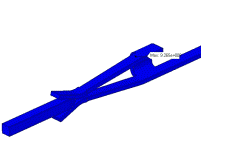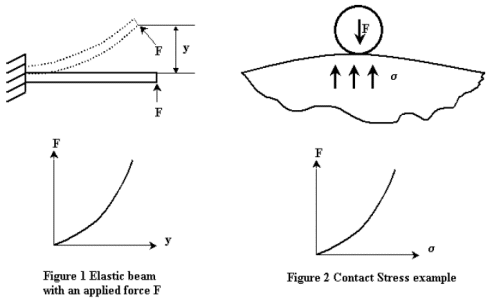EXPERT SERVICES — Linear vs. Nonlinear
How do Linear and Nonlinear analysis differ?
In linear analysis, the response of a structure is directly proportional to the load. It is assumed that:

- the displacements and rotations are small.
- stress is directly proportional to strain.
- loads maintain their original directions as the structure deforms.
However, assumptions made during a linear analysis may not apply in actual situations. For example:
- A contact area may change as the load changes.
- A material may no longer exhibit an elastic behavior especially after it starts to yield and flows into the plasticity region.
- The stiffness of the structure may decrease because of buckling or the material may even fracture.
- The displacements and rotations may become too large and thus there is a need to develop equations describing the equilibrium at various intervals instead of one single configuration.
- The direction and magnitude of the applied force can change in large rotation problems.
Consequently, a stress/strain analysis problem may become nonlinear and thus a plot of load versus displacement ceases to be a straight line. The figures below represent different types of nonlinear models:

Figure 1 shows an elastic beam loaded with a force "F" which acts normal to the axis of the beam at all times. The graph between "F" and the vertical displacement "y" is intended to represent the actual nonlinear displacement which occurs because of geometric nonlinearity. This means that because of significant changes in the geometry of the structure as it deforms, the displacement is no longer linear.
Figure 2 shows how the contact area between the bodies increases as the load "F" increases. Unlike the first example in Figure 1, the displacements and the strains are significantly small here. Nevertheless the problem is nonlinear because of the change in contact surface area.
Nonlinear problems must be solved in several steps by updating the tentative solution after each step and repeating the procedure until a convergence is achieved. The loads are applied gradually in each step and an iterative process is utilized so that the equilibrium conditions are satisfied. Thus, every load step is an individual linear analysis onto itself!
Typical nonlinear scenarios include the following:
- Materials that exhibit viscoelastic, viscoplastic or creep behavior (the deformation is a function of the load rate).
- Problems with large strains.
ist gets it done!




